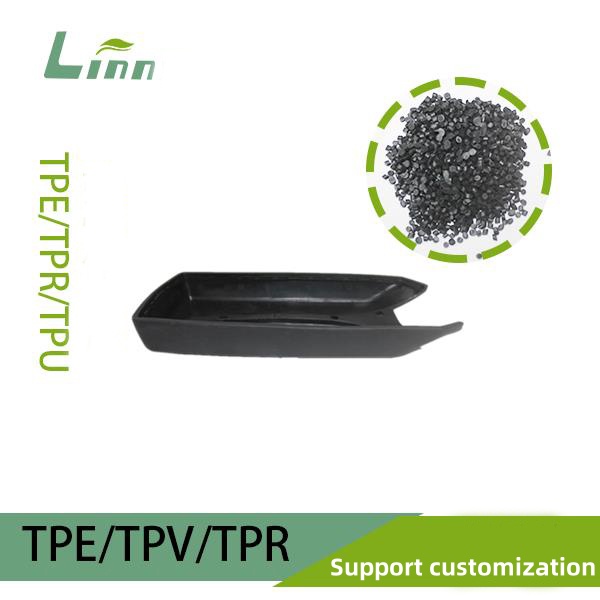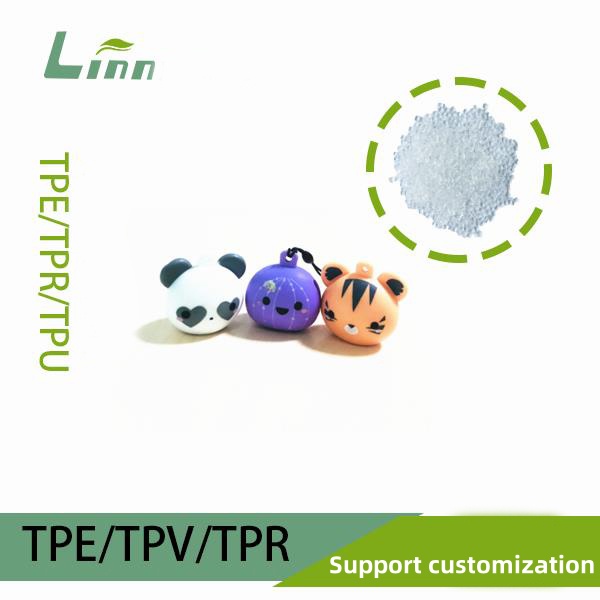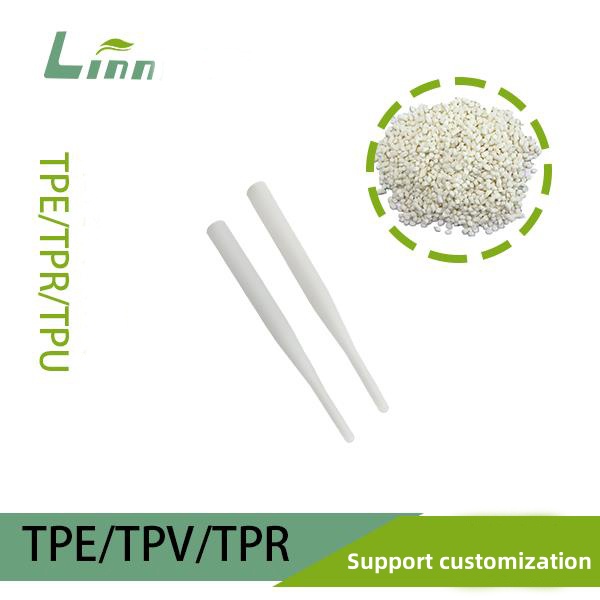As someone who’s been immersed in the TPE (Thermoplastic Elastomer) industry for years, I often get asked how to distinguish whether a TPE product was made using vacuum forming or injection molding. This question might seem straightforward, but it involves a nuanced understanding of material properties, manufacturing processes, and product characteristics. Whether you’re in procurement, product development, or quality control, accurately identifying the manufacturing process can help you better evaluate performance, cost, and suitability for your needs. In this article, I’ll share my expertise to guide you through the process of identifying TPE vacuum forming versus injection molding, offering practical tips and key observations to make the distinction clear.

1. Understanding Vacuum Forming and Injection Molding
To determine whether a TPE product is vacuum-formed or injection-molded, you first need to grasp the fundamental differences between these processes. Here’s my breakdown of the two:
1.1 Vacuum Forming
Vacuum forming (also known as thermoforming) involves heating a TPE sheet until it’s pliable, then using a vacuum to pull it over a mold to shape it. After cooling, the product is typically trimmed or post-processed. This method is ideal for thin-walled, large-area, simple-structured products like packaging trays, automotive interior panels, or disposable containers.
Key Steps: Sheet heating → vacuum suction → cooling and shaping → trimming.
Material Form: TPE sheets (typically 0.2-2 mm thick).
Characteristics: Simple process, low mold costs, but limited precision and complexity.

1.2 Injection Molding
Injection molding involves melting TPE pellets and injecting the molten material into a mold cavity, where it cools and solidifies into the final shape. It’s perfect for high-precision, complex, thick-walled products like automotive seals, phone cases, or medical device components.
Key Steps: Pellet melting → injection filling → holding and cooling → demolding.
Material Form: TPE pellets (melted via a screw).
Characteristics: High precision, ideal for intricate designs, but higher mold and equipment costs.
My Experience: I once helped a Linn client analyze a product they mistakenly thought was injection-molded but was actually vacuum-formed. This misjudgment caused assembly issues. By understanding the process basics, they quickly identified the correct method through visual inspection, saving further complications.
2. Identifying Vacuum Forming vs. Injection Molding Through Product Features
While both processes can shape TPE, the resulting products differ significantly in appearance, structure, and details. I’ve outlined key characteristics below to help you differentiate them.
2.1 Thickness and Uniformity
Vacuum Forming: Products are typically thin-walled, ranging from 0.2-2 mm. Due to sheet stretching, thickness can vary, especially in deeply drawn areas, with deviations up to 10%-20%.

Injection Molding: Thickness spans a wider range (0.5-10 mm or more), and it’s more uniform thanks to high-pressure molten filling, with deviations usually below 5%.
Observation Tip: Use a caliper to measure thickness at multiple points. Vacuum-formed parts often show noticeable thickness variations, especially at edges or deep cavities, while injection-molded parts maintain consistent thickness.
2.2 Surface Texture and Finish
Vacuum Forming: Surfaces often retain the sheet’s original texture or gloss, appearing slightly rougher, especially in stretched areas where stretch marks or uneven gloss may occur.
Injection Molding: Surface smoothness depends on mold polishing, often resulting in a high-gloss or finely textured finish. Injection-molded parts are uniform but may show minor flow marks or sink marks.
My Advice: Run your fingers over the surface. Vacuum-formed parts may feel slightly “sheet-like,” while injection-molded parts are smoother and more refined. If you have a magnifying glass, look for stretch marks (vacuum forming) or flow marks (injection molding).
2.3 Edges and Trim Marks
Vacuum Forming: Edges typically require trimming, leaving cut marks, burrs, or slight curling. Edges may appear irregular and need manual finishing.
Injection Molding: Edges are clean and molded directly, with no trimming needed. You might notice subtle parting lines or ejector pin marks, but they’re smooth overall.
Real-World Example: I once examined a Linn TPE automotive interior part and spotted trim burrs along the edges, confirming it was vacuum-formed. The client had assumed it was injection-molded, but this finding helped them adjust their expectations for further processing.

2.4 Structural Complexity and Details
Vacuum Forming: Best for simple shapes, struggling with fine details like threads or snaps. Deeply stretched areas may show folds or distortion.
Injection Molding: Excels at complex structures, including thin ribs, embedded inserts, or tiny holes. Details are sharp, with tolerances as tight as ±0.1 mm.
How to Check: Look for intricate features like holes or protrusions. Simple shapes with stretch marks lean toward vacuum forming; precise, detailed parts suggest injection molding.
2.5 Gates and Mold Marks
Vacuum Forming: No gate marks since it uses sheets, not molten injection. You might see clamping lines (from sheet fixation) or mold contact marks.
Injection Molding: Often has gate marks (like pinpoint or fan gates) in non-critical areas, along with parting lines, ejector pin marks, or venting grooves.
Quick Tip: Inspect hidden areas with your fingers or a magnifying glass. Gate or ejector marks are telltale signs of injection molding, while vacuum-formed parts typically show only trim or clamping traces.

2.6 Material Distribution and Bubbles
Vacuum Forming: Sheet stretching can lead to uneven material distribution, with micro-bubbles or stress whitening in deeply drawn areas due to strain.
Injection Molding: Material fills evenly, with fewer bubbles. Any bubbles usually result from process issues (like poor venting), not the method itself.
My Insight: I once used a flashlight to inspect a TPE part and noticed slight whitening at the edges, paired with uneven thickness, pointing to vacuum forming.
3. Confirming Through Manufacturing Traces
Beyond the product itself, manufacturing traces offer valuable clues. Here are methods I use to verify the process:
3.1 Check Raw Material Form
Vacuum Forming: Factories use TPE sheets, stored as rolls or flat panels with fixed thickness.
Injection Molding: Uses TPE pellets, stored in bags or hoppers, melted via a screw.
On-Site Clue: If you can visit the production floor, seeing sheets versus pellets immediately reveals the process.

3.2 Examine Equipment
Vacuum Forming: Requires a vacuum forming machine with a heating plate and vacuum pump, using simpler single-sided molds.
Injection Molding: Uses an injection molding machine with a screw, barrel, and complex double-sided or multi-cavity molds.
My Story: During a factory visit, I noticed a client feeding sheet rolls into a vacuum forming machine, confirming their TPE trays were vacuum-formed, not injection-molded.
3.3 Production Scale and Speed
Vacuum Forming: Suited for small to medium batches, with longer cycle times (30 seconds to 2 minutes), but low mold costs make it great for prototyping.
Injection Molding: Ideal for high-volume production, with shorter cycles (10-60 seconds), though mold development is costlier.
Judgment Cue: High-volume, complex parts lean toward injection molding; small-batch, simple shapes are more likely vacuum-formed.
4. Comparing TPE Vacuum Forming and Injection Molding Applications
For clarity, I’ve created a comparison table summarizing product traits and use cases:
TPE Vacuum Forming vs. Injection Molding Comparison Table:
| Feature/Parameter | Vacuum Forming | Injection Molding |
|---|---|---|
| Raw Material | TPE sheets (0.2-2 mm) | TPE pellets |
| Part Thickness | Thin-walled, 0.2-2 mm, uneven | 0.5-10 mm or thicker, uniform |
| Surface Texture | Stretch marks, slightly rough | Smooth or textured, mold-dependent |
| Edge Features | Trim marks, burrs | Parting lines, gate marks, ejector pins |
| Structural Complexity | Simple shapes, no intricate details | Complex structures, fine details |
| Mold Cost | Lower, single-sided molds | Higher, double-sided or multi-cavity molds |
| Production Efficiency | Small-medium batches, longer cycles | High-volume, shorter cycles |
| Typical Uses | Packaging trays, interior panels | Seals, phone cases, medical parts |
My Recommendation: If you’re holding a TPE product, cross-check its features against this table. Uniform thickness and gate marks almost always point to injection molding.
5. Using Tools for Accurate Identification
If visual inspection leaves you unsure, tools can boost your confidence. Here are methods I rely on:
Caliper or Thickness Gauge: Measures thickness and uniformity. Vacuum-formed parts show clear thickness variations; injection-molded parts are stable.
Magnifying Glass or Microscope: Examines surface texture, stretch marks, or gate traces. Injection molding gates are often tiny (0.5-2 mm), easily overlooked.
Bright Flashlight: Checks for internal bubbles or stress whitening. Vacuum-formed parts often show whitening from stretching, unlike injection-molded ones.
Material Testing: If available, use a Melt Flow Index (MFI) tester. Injection-grade TPEs typically have higher MFI (10-50 g/10min) for filling, while vacuum-forming TPEs prioritize extensibility.

Case Study: I once used a magnifying glass to help a Linn client analyze a TPE part, spotting faint parting lines and gate marks that confirmed injection molding. They had thought it was vacuum-formed, nearly leading to the wrong processing equipment choice.
6. Common Pitfalls and Precautions
I’ve seen people stumble when identifying TPE processes. Here are pitfalls to avoid and tips to stay on track:
Pitfall 1: Judging by Gloss Alone
Both processes can yield glossy finishes, but the source differs (sheet for vacuum forming, mold for injection). Combine thickness, edge, and detail checks for accuracy.
Pitfall 2: Assuming Thin Parts Are Vacuum-Formed
Injection molding can produce thin-walled parts (like 0.5 mm phone cases). Look for gates or intricate details instead.
Pitfall 3: Ignoring Post-Processing
Coating or polishing can obscure process marks. Focus on hidden areas like the inner surface or edges.
Precautions:
If the part is assembled or coated, process marks may be concealed. Ask the manufacturer or inspect raw samples.
TPE grades influence process choice. Check the supplier’s material data sheet to verify suitability for vacuum forming or injection molding.

7. Real-World Case Study
Last year, a Linn client reached out, unsure whether their batch of TPE automotive interior parts was vacuum-formed or injection-molded, which was critical for their assembly plans. After examining the parts, I noted:
Uneven Thickness: Ranging from 1.5 mm to 0.8 mm, with thinner areas in deep draws.
Edge Burrs: Visible trim marks and slight curling.
Surface Traits: Subtle stretch marks, no gates or parting lines.
These signs pointed to vacuum forming. The client confirmed with their supplier, who verified it was indeed vacuum-formed. This clarity helped them adjust their assembly process, avoiding costly errors. The experience underscored the value of thorough observation and multi-factor analysis.

8. Frequently Asked Questions
To make things easier, I’ve answered common questions about identifying TPE processes:
Q1: Are TPE materials different for vacuum forming and injection molding?
A: Partially. Vacuum-forming TPEs emphasize extensibility and toughness, while injection-molding TPEs prioritize flowability. Check supplier specs for details.
Q2: If there’s no gate mark, is it definitely vacuum-formed?
A: Not necessarily. Injection molding gates can be trimmed or hidden. Thickness uniformity and detail complexity are better indicators.
Q3: Can vacuum-formed parts have complex structures?
A: Vacuum forming struggles with intricate features like snaps or threads due to sheet limitations. Fine details usually indicate injection molding.
Q4: How do I quickly identify the process for small-batch parts?
A: Small batches with simple shapes are often vacuum-formed due to lower mold costs. Check for trim marks to confirm.
Q5: Does process identification affect downstream work?
A: Yes. Vacuum-formed parts are less robust, suited for lighter applications; injection-molded parts offer precision for complex assemblies. Misjudging can lead to design or cost issues.
9. Conclusion
Distinguishing whether a TPE product is vacuum-formed or injection-molded boils down to examining thickness, surface, edges, and structural details, alongside manufacturing traces and material forms. With these insights, you can confidently identify the process even without specialized tools. My advice? Look closely, feel the part, and compare multiple traits—over time, you’ll develop an instinct for it.
I hope this guide empowers you to accurately identify TPE manufacturing processes and make smarter decisions in production or procurement. If you have more questions, feel free to reach out—I’m here to share my knowledge and help you master TPE applications!



